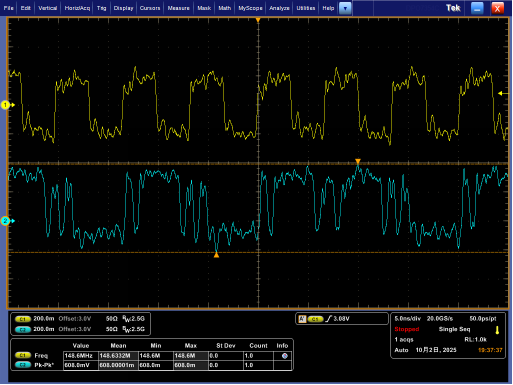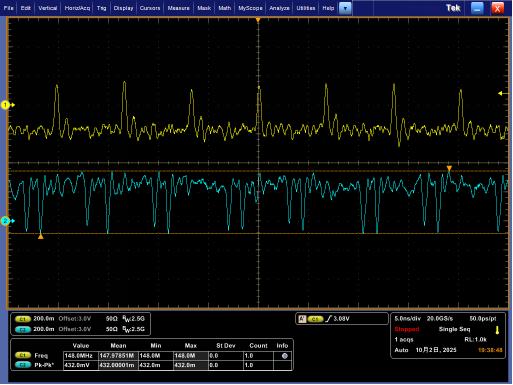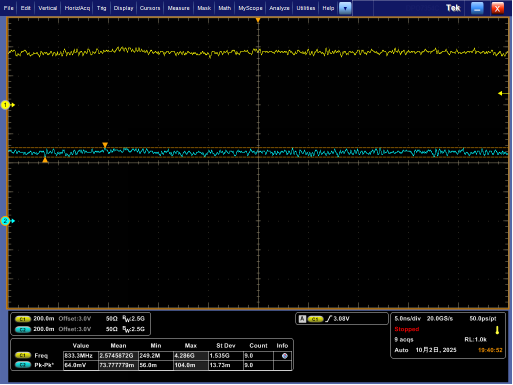Tool/software:
Hello Team,
I have a question about the operation of this IC when an HDMI signal is input to the CH1 input and no HDMI input signal is input to the CH2 input.
If CH2 is selected at this time, there is a chip that outputs a degraded CH1 input waveform to the HDMI output.
It appears that this phenomenon may occur in adjacent CHs.
Depending on the monitor, this signal may cause a degraded image of the adjacent CH to be displayed, even though the CH that originally has no HDMI input is selected.
As far as we can check the waveform from outside the IC, we cannot see any signal on the TMDS pin on the input side, so we believe that the phenomenon is occurring inside the chip.
Is there any countermeasure for this phenomenon?
Thank you,
Tomohiro









